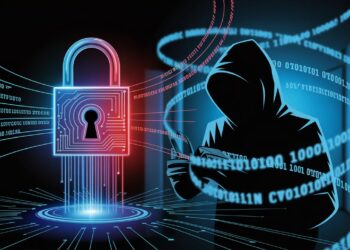Digital identity management is changing fast. Traditional methods rely on physical documents or centralized databases, which can be slow and vulnerable to hacking. Now, blockchain technology is transforming how we prove who we are online. Decentralized, user-controlled identities are becoming more common, promising increased security and privacy. As online trust grows more vital, blockchain-based solutions are filling a crucial role in making identities safer and easier to manage.
Understanding Blockchain-Based Digital Identity
What Is Blockchain Digital Identity?
Blockchain digital identity is a way to verify who you are using a decentralized ledger. Instead of storing your info in one big database, it keeps encrypted data across many computers. This makes it harder for hackers to steal or change your details. Unlike traditional ID checks, which often require physical documents or third-party verification, blockchain identities give users control over their data. They decide what info to share and when.
Benefits of Blockchain for Digital Identity
- Better Security and Privacy: Data is stored securely with encryption. Only you control your information.
- User Control and Portability: Your identity can move easily between services without needing to re-verify.
- Less Fraud and Identity Theft: Decentralization makes it tougher for criminals to pretend to be someone else. It also reduces the chances of data breaches.
Key Use Cases of Blockchain in Digital Identity
Self-Sovereign Identity (SSI)
Self-Sovereign Identity, or SSI, puts you in charge of your online ID. You create, store, and share your credentials without relying on third-party agencies. Estonia’s e-identity system, which combines blockchain parts, is a good example. It allows citizens to access government services with full control over their data. The big benefit? You’re the owner of your identity, and your info is more private. Plus, SSI systems work across borders, making the digital world more connected. It also keeps data minimal, sharing only what’s necessary.
Digital Identity Verification for Online Services
Using blockchain makes the verification process more straightforward. It simplifies KYC (Know Your Customer) and AML (Anti-Money Laundering) checks through secure digital credentials. Civic, a popular blockchain-based platform, helps verify identities for banks and apps. This makes onboarding faster and safer. To get even more secure, consider adding multi-factor verification that combines blockchain credentials with other methods.
Access Management and Authorization
Blockchain helps control who can access sensitive info or services. Hospitals, schools, and governments use it to keep records safe. MIT’s MedRec project, for example, manages health records on the blockchain. It offers tamper-proof logs of who accessed what and when. Because data isn’t stored in just one place, there are fewer chances for hacking or unauthorized changes.
Secure Digital Identity Wallets
Wallets are apps or devices where you can store your verified credentials securely. Microsoft has a system called Azure AD Verifiable Credentials for this purpose. These wallets make it easy to carry your identity info on your phone or hardware device. To enhance security, integrate these wallets with your existing login systems, so you can quickly prove who you are without revealing too much.
Cross-Border Identity Solutions
Blockchain also simplifies international ID verification. EverAPI partners with governments to make checking identities across different countries easier. This speeds up online onboarding and reduces fraud. It also helps underbanked or underserved populations access services more easily. With this tech, crossing borders in the digital world becomes much simpler.
Challenges and Limitations of Blockchain Digital Identity
Privacy and Data Security Concerns
Even though blockchain is considered secure, risks remain. If not implemented right, sensitive info could be exposed. Techniques like Zero-Knowledge Proofs and encrypting data can help keep info private while proving identities.
Scalability and Interoperability Challenges
Current blockchains aren’t always fast enough or compatible with each other. This can slow down systems or create silos. Efforts are underway to develop standards and enable different blockchains to work together smoothly, but it’s still a work in progress.
Regulatory and Legal Considerations
Laws about digital identity are still changing. Rules like GDPR in Europe and eIDAS affect how data is collected and shared. Companies need to stay updated and ensure their solutions follow all rules to avoid penalties or legal issues.
Future Outlook and Innovations in Blockchain Digital Identity
Emerging trends include AI-driven verification, biometric data integration, and even decentralized autonomous identities (DIDs). These innovations will make systems smarter, faster, and more secure. Experts expect blockchain identities to become mainstream as governments and businesses recognize their value. To stay ahead, join industry groups and keep up with new standards and regulations.
Conclusion
Blockchain is shaping the future of digital identity. It makes it safer, more private, and easier to control your data. As more organizations use these systems, online trust will grow stronger, and fraud will drop. Whether it’s managing health records, verifying your age, or crossing borders, blockchain offers solutions that are reliable and user-friendly. Adopting blockchain-based identities isn’t just smart—it’s necessary for a more secure digital future.
Join Us : Twitter | Website | GitHub | Telegram | Facebook | YouTube

























